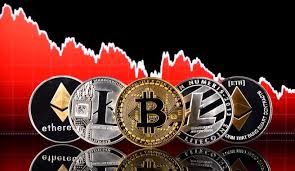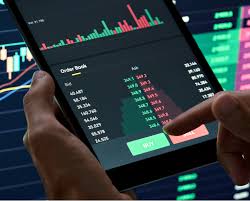
Exploring the Future: Crypto Trading Models
As the cryptocurrency market continues to evolve, so do the methods and strategies employed by traders. In this article, we will explore the various crypto trading models, their underlying principles, and the advantages and disadvantages of each. For those looking to improve their understanding of online trading, Crypto Trading Models click here to discover additional resources.
Understanding Crypto Trading Models
In the world of cryptocurrency trading, models are essential as they provide traders with frameworks for making decisions in a market characterized by volatility and unpredictability. Each model adjusts to market conditions, trader preferences, and technological advancements. Approximately, there are several primary types of trading models prevalent in the crypto space:
1. **Day Trading**
2. **Swing Trading**
3. **Scalping**
4. **HODLing**
5. **Arbitrage**
6. **Algorithmic Trading**
Let’s delve deeper into each trading model, highlighting their approaches, advantages, and potential drawbacks.
1. Day Trading
Day trading involves buying and selling cryptocurrencies within a single trading day. The goal is to capitalize on smaller price movements during the day. Day traders rely on technical analysis and charts to direct their trades.
**Advantages:**
- Potential for high profits in a short time span.
- Flexibility to react quickly to changing market conditions.
- No overnight risk as positions are closed by the end of the trading day.
**Disadvantages:**
- High stress and time commitment required.
- Transaction fees can accumulate quickly from frequent trading.
- Requires continuous monitoring of the market.
2. Swing Trading
Swing trading is a strategy where traders hold onto their assets for several days to capture price swings. This model balances the benefits of day trading and long-term investment.
**Advantages:**
- Wider profit margins due to longer holding periods.
- Less time-intensive than day trading.
- Can utilize both technical and fundamental analysis.
**Disadvantages:**
- Exposed to overnight market shifts.
- Requires knowledge of market cycles and trends.
- May involve greater risk than HODLing or long-term investing.
3. Scalping
Scalping is a rapid trading strategy aimed at profiting from small price changes. Traders using this model execute dozens or hundreds of trades per day, often holding positions for mere minutes.
**Advantages:**
- Lots of opportunities to profit from minor fluctuations.
- Minimal overnight risk.
**Disadvantages:**
- High transaction costs can eat into profits.
- Requires a large amount of time dedicated to monitoring trades.
- Psychological toll of rapid decision-making.
4. HODLing

HODL, a term originating from a misspelled forum post, stands for “Hold On for Dear Life.” This model entails buying and holding cryptocurrencies for the long term, regardless of market volatility.
**Advantages:**
- Reduced stress from daily market fluctuations.
- Potential for significant long-term profits.
- Lower transaction costs due to less frequent trading.
**Disadvantages:**
- Vulnerable to market downturns over an extended period.
- Lack of liquidity during bearish trends.
- Requires strong conviction in chosen assets.
5. Arbitrage
Arbitrage involves buying a cryptocurrency on one exchange where the price is lower and simultaneously selling it on another exchange where the price is higher to exploit price discrepancies.
**Advantages:**
- Relatively low-risk strategy if executed properly.
- Can yield consistent, albeit small, profits.
**Disadvantages:**
- Requires fast execution and access to multiple exchanges.
- Can be affected by trading fees and withdrawal limits.
- Market efficiencies can quickly eliminate opportunities.
6. Algorithmic Trading
Algorithmic trading employs programmed instructions to buy and sell cryptocurrencies based on predetermined criteria. This method leverages the speed and efficiency of computers to make trades.
**Advantages:**
- Capable of processing large volumes of data and executing trades instantly.
- Eliminates emotional decision-making.
- Can be backtested against historical data to refine strategies.
**Disadvantages:**
- Requires technical expertise to develop algorithms.
- Dependence on technology means risks related to system failures and bugs.
- Market conditions can evolve, rendering previously successful strategies ineffective.
Choosing the Right Trading Model
Selecting the appropriate trading model depends on several factors, including your risk tolerance, availability, and knowledge. Here are some tips for choosing the right model:
- **Assess your level of risk tolerance:** If you are risk-averse, models like HODLing or swing trading may suit you better. Conversely, if you thrive in high-pressure environments, day trading or scalping may be more appealing.
- **Time commitment:** Think about how much time you can dedicate to trading daily or weekly. If you have limited time, models like HODLing or swing trading might work better compared to day trading.
- **Market knowledge:** If you are well-versed in technical and fundamental analysis, you may find day trading or scalping more rewarding. However, if you’re new to trading, consider starting with a HODLing strategy to minimize risk.
The Future of Crypto Trading Models
As cryptocurrencies mature and evolve, so too will the models used by traders. Emerging technologies, such as artificial intelligence and machine learning, are likely to impact how traders analyze data and make decisions.
The growing popularity of decentralized finance (DeFi) platforms also introduces new trading models and opportunities. Traders who leverage these innovations can stay ahead of the curve in an ever-changing market landscape.
Conclusion
As the crypto market continues to grow, understanding the different trading models can provide valuable insights and strategies for both novice and experienced traders. Whether you choose to day trade, swing trade, scalp, or simply hold your assets, knowledge of these models will contribute to your success in the vibrant world of cryptocurrency trading.
Continuously educating yourself about market conditions, trading psychology, and technological developments will enhance your trading experience and improve your decision-making process. Explore the options available, test different strategies, and find what works best for you in this exciting and dynamic market.
